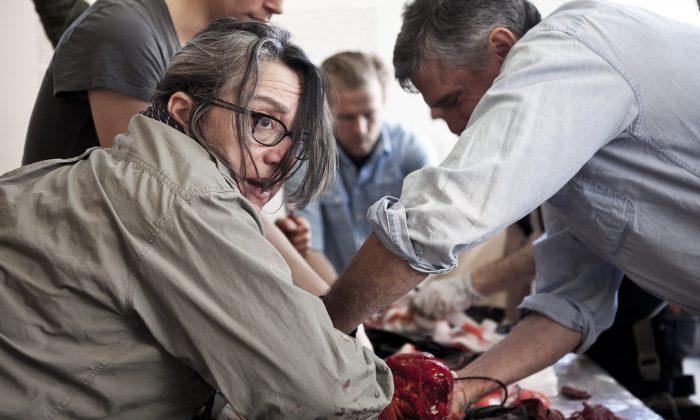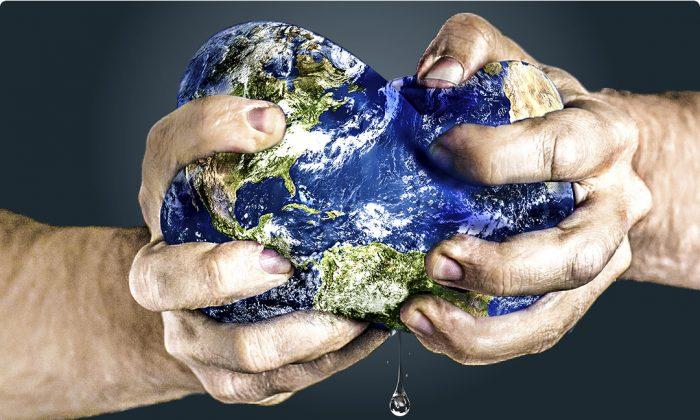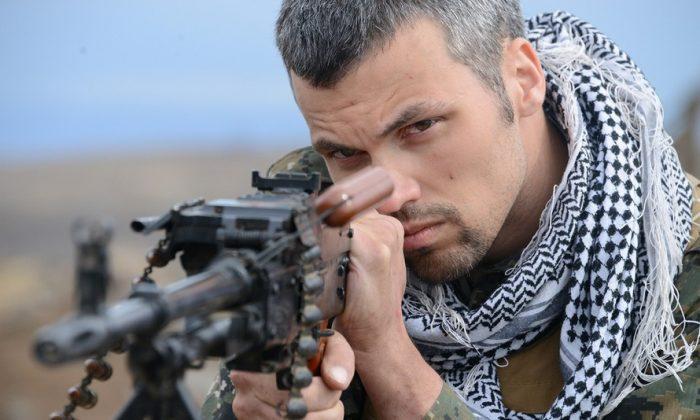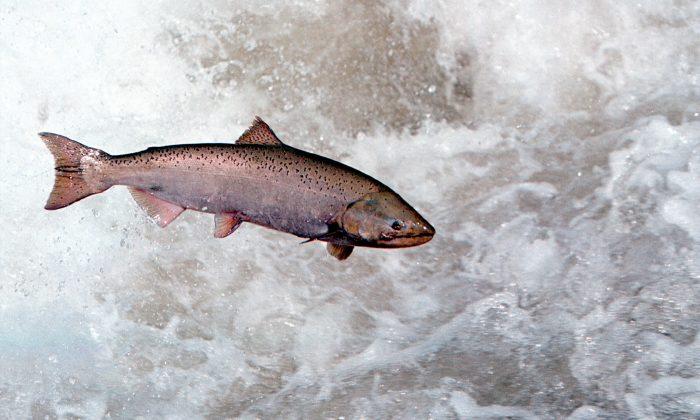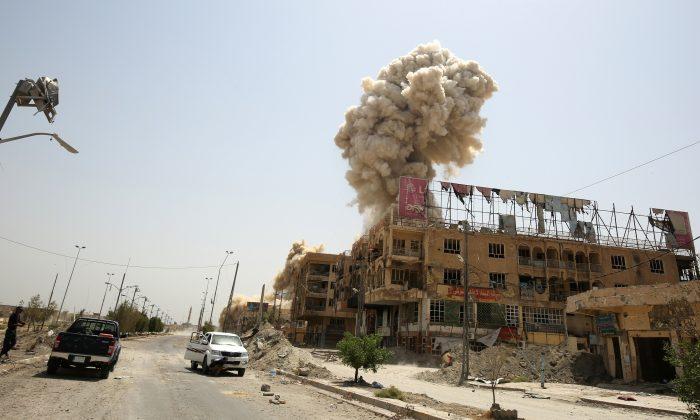NEW YORK—Peering through the haze from a smoke bomb, with the simulated sounds of war in the background, Igor Kossov bent over to bandage a fake wound on a dummy. Though it looked like a scene for a movie, Kossov was rehearsing for the real thing.
Kossov was one of 24 freelance conflict journalists from all over the world—10 of whom are based in New York City—who took part in life-saving first-aid training last week at the Bronx Documentary Center.
Reporters Instructed in Saving Colleagues (RISC) was created by former conflict journalist Sebastian Junger after his close friend and colleague Tim Hetherington was killed during a mortar attack while working in Misrata, Libya, in 2011. When Junger found out that Hetherington may have lived if someone had known how to treat his wounds, he decided to start a basic medical training program for conflict journalists.
Practicing how to deal with a simulated injury can be unnerving, but it can make all the difference in reality. Especially if panic starts to take hold.
“Panic is huge,” said Sawyer Alberi, lead instructor with Wilderness Medical Associates International (WMA), during a break from the training. “You can’t panic. Panic is contagious.”
For 10 years, Alberi has worked with WMA, which cooperates with RISC, and has completed tours of duty in Iraq and Afghanistan as a medic for the Vermont National Guard. She said she is “psyched” to cooperate with RISC, especially because in her wartime experiences, she has seen how much basic medical training is needed.
“[The journalists in the RISC training are] in really dangerous situations. When I was in Afghanistan, I saw that,” noted Alberi, adding that the worst part was seeing journalists who weren’t prepared for dealing with life-threatening scenarios. “We saw very clearly that they weren’t trained. They didn’t have anything (such as bandages) with them.”
But the journalists who go through RISC training fall under a different category. By the time they are done, they are educated and equipped to do basic treatment of life-threatening injuries while in the field. Every RISC trainee gets a medical kit that straps to the side of their leg and contains items like something to cut a seat belt if you’re trapped in a rolled car, bandages, and a variety of other medical supplies.
The main focus of RISC training and the equipment in the field kit is to stop bleeding wounds, one of four preventable deaths from injuries that occur on the battlefield. While it doesn’t qualify them as medics, or, as Alberi puts it, they are not trained to “do brain surgery,” it sets a good foundation for helping someone who is seriously injured.
One of the participants, Katie Orlinsky, is a Brooklyn-based freelance photographer who works mostly in Mexico and regularly photographs for The New York Times and The Wall Street Journal.
“I’m really glad to be a part of it,” she said. “I learned so much [just] on the first day.”
Orlinsky also said she feels it was the only good thing to have come out of the tragedy of Hetherington’s death. Getty photographer Chris Hondros was also killed at the same time, and Orlinsky was working with them when it happened.
Ben Solomon, a freelance photographer based in Istanbul who worked with Anthony Shadid before his death from an asthma attack in Syria, has done three other similar trainings and thinks RISC is “fantastic.”
“It’s direct and thorough,” said Solomon, who agrees that it gives some meaning to the deaths of Hetherington and Hondros.
The existence of RISC and the participation of journalists in the training, says Solomon, goes a long way “to be able to not have them die in vain.”
The fourth RISC training session will be held in New York City in June, and two others are tentatively scheduled for London and Beirut.
